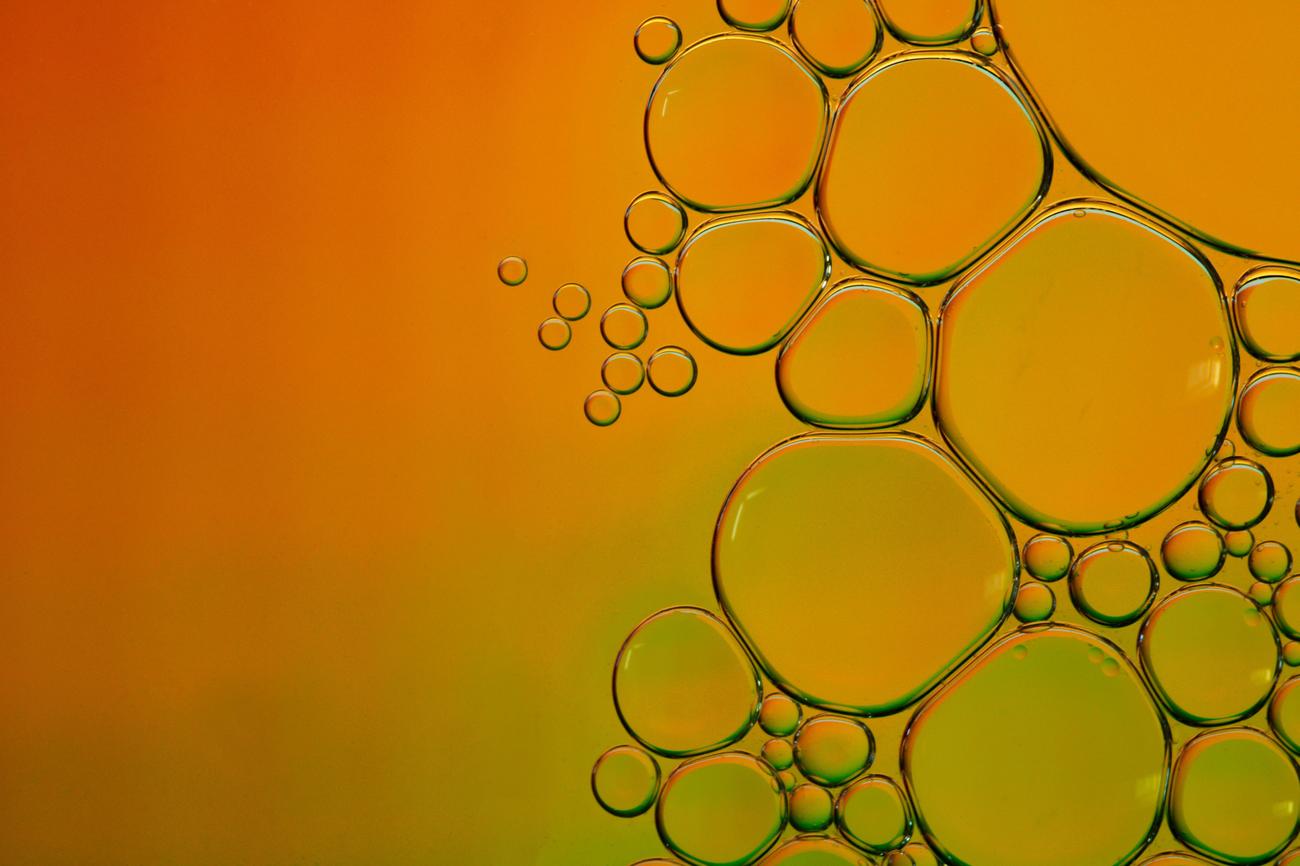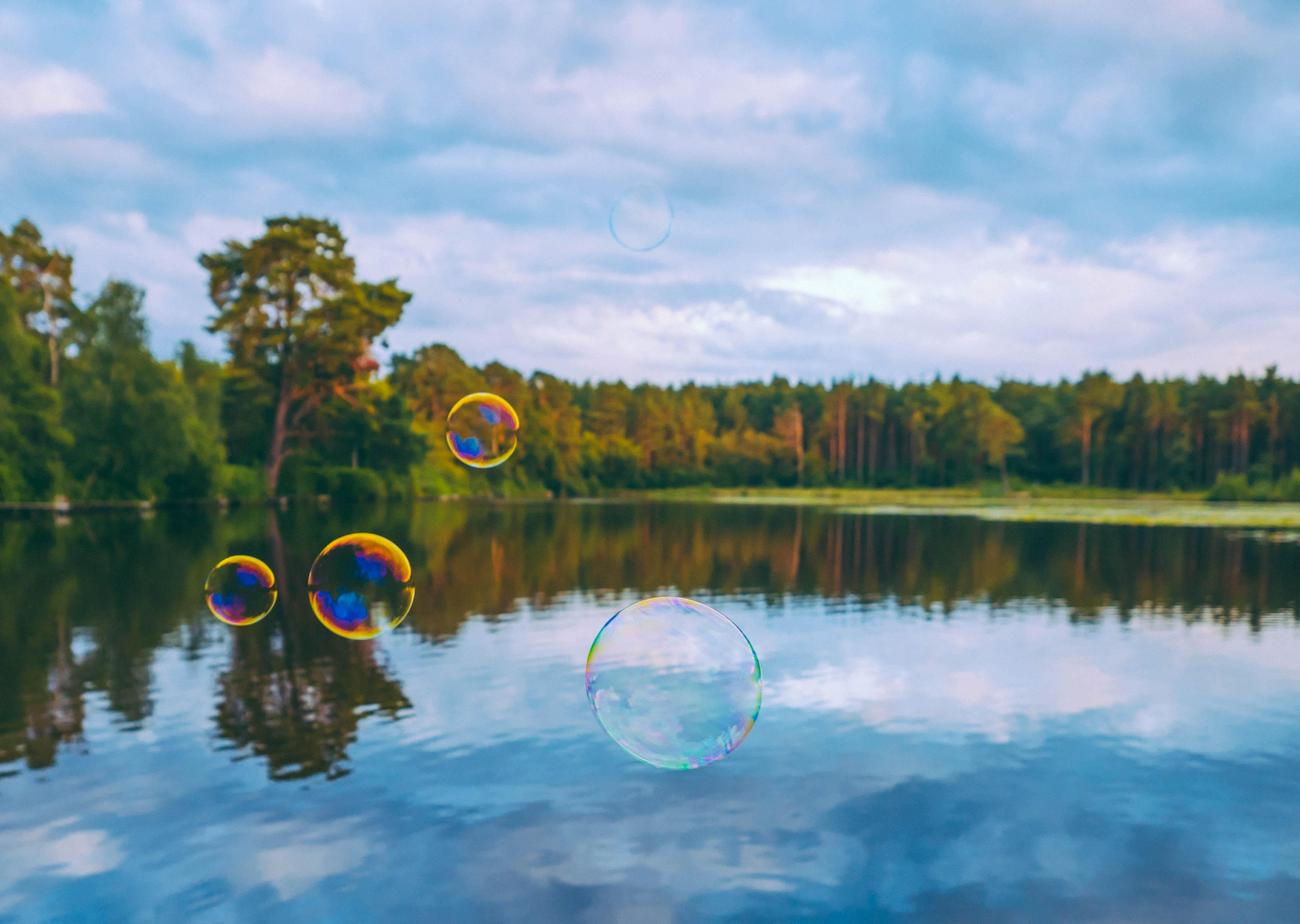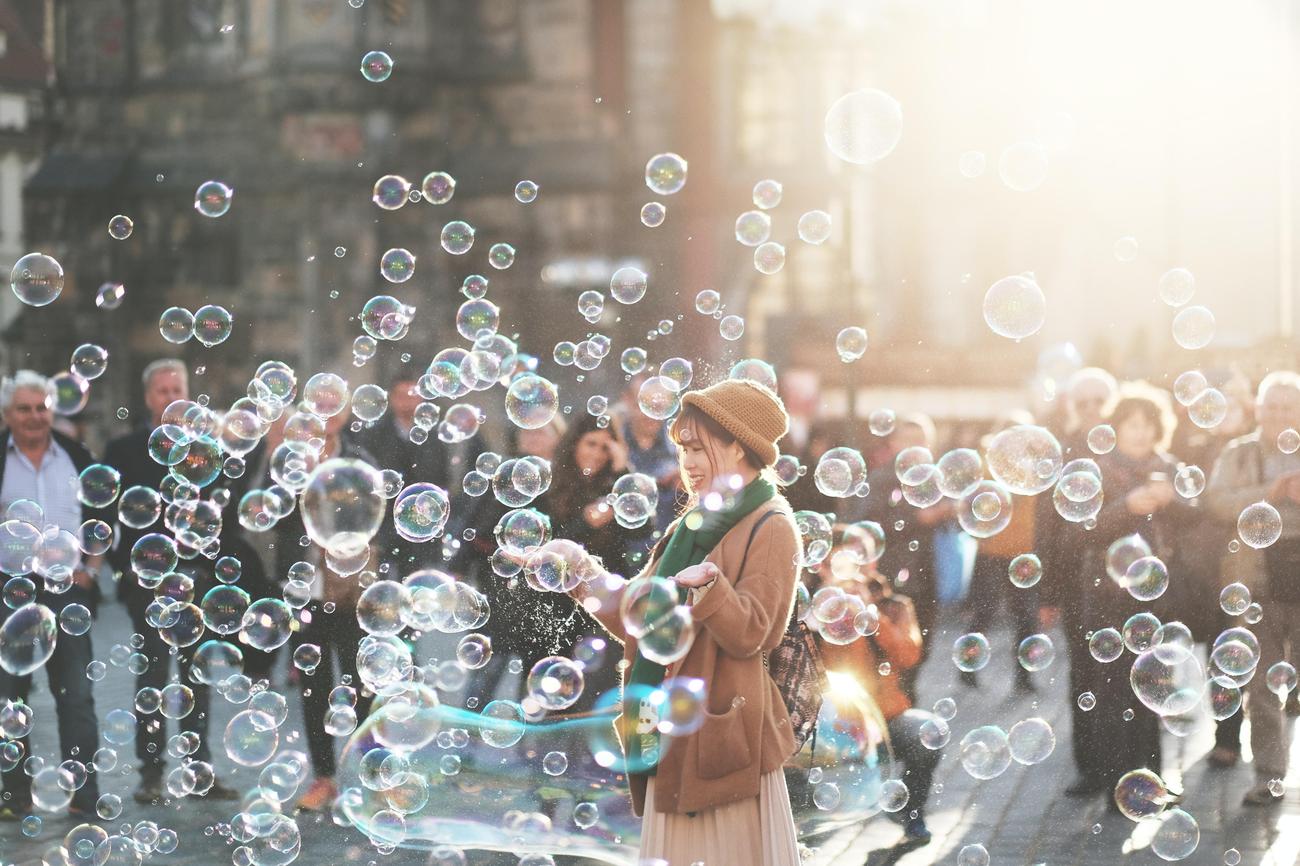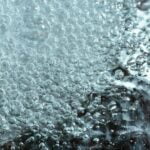Get ready to dive into a world where nature’s secrets rise to the surface and take form in mesmerizing spheres. In this article, we embark on a journey to explore the captivating phenomenon of bubbles in nature. From the depths of oceans to the tranquil surfaces of lakes, from the vibrant lives of plant ecosystems to the intricate formations of our planet, we’ll unveil the enchanting world of bubbles. Join me as we unravel the mysteries behind these delicate orbs and discover the role they play in the ever-evolving natural world. Brace yourself for a breathtaking adventure that will leave you in awe of the hidden beauty within these ephemeral gems. Welcome to the realm of bubbles in nature!

Bubbles in Nature
Picture yourself walking along the sandy shores of a beach, mesmerized by the rhythmic crashing of waves. Suddenly, you notice something intriguing—a burst of bubbles rising to the surface. What causes these ephemeral spheres to form and vanish in the natural world? Let’s dive in and explore the enchanting phenomenon of bubbles in nature.
In its simplest form, a bubble is a delicate film of soapy water filled with air. The mesmerizing allure lies in the bubble’s structure—a thin layer of water sandwiched between two layers of soap molecules. But what triggers their formation in the vast expanse of nature? Nature, as it turns out, possesses a wealth of opportunities for bubble creation.
Bubbles can arise in various ways, driven by forces of nature. Ocean waves crashing onto the shore create countless bubbles as they break. The sheer force and agitation of the waves cause air to become trapped within the water, resulting in the mesmerizing sight of foamy waves. These bubbles dance upon the surface, adding a touch of magic to the coastal scenery.
Raindrops, too, play a role in the creation of bubbles in nature. Imagine the exhilaration of a rainstorm, raindrops pounding against the earth’s surface. Upon impact, the raindrops disturb the water, generating tiny bubbles that swiftly rise to the surface. It’s as if the rain is orchestrating a symphony of bubbles, each one adding to the overall harmony of nature.
As bubbles form and float serenely, there is an undeniable charm hidden within their fragile existence. Yet, every bubble has an inevitable fate—they burst. When this happens, tiny jets of water and other materials are propelled into the air, creating a captivating spectacle. The burst of each bubble carries with it a unique story, painting the air with beauty and wonder.
To fully grasp the intricacies of bubbles in nature, it is crucial to explore the science behind their behavior. These delicate spheres obey the laws of science, revealing the principles of surface tension and viscosity. Surface tension is the force that binds the water molecules within the bubble’s film together, while viscosity determines how readily a liquid flows. These properties shape the size, shape, and duration of each bubble, creating a symphony of diverse forms in the natural world.
In nature, bubbles can also transcend the realm of water and incorporate different gases. For instance, carbon dioxide has the remarkable ability to create bubbles, enabling the mysterious dance of effervescent sparkling waters. Liquids carbonated with this gas release mesmerizing bubbles that delight our senses, capturing the very essence of nature’s playfulness.
Through the lens of science and exploration, we uncover the hidden stories behind bubbles in nature. They embody a delicate harmony of water, air, and soap, forming and vanishing in an ethereal waltz. These captivating spheres invite us to marvel at the beauty found in the simplest of natural phenomena. So the next time you encounter one of nature’s magical bubbles, take a moment to appreciate the ephemeral enchantment they bring—a fleeting reminder of the wonders that lie just beneath the surface.
“Bubbles in nature are delicate spheres that dance upon the waves and raindrops, revealing the beauty hidden within the natural world.”
Bubbles have fascinated humans for centuries. From the joy they bring to children’s parties, to the scientific mysteries they hold, there is so much to learn about these mesmerizing spheres. If you are curious about the wonders of bubbles and want to know some mind-blowing facts about them, click here for our collection of fascinating information on bubbles. Let your imagination take flight as you delve into the world of bubble science and discover the secrets that make these delicate creations so captivating. So, why wait? Explore the enchanting realm of bubbles by clicking here: facts about bubbles. Get ready to be amazed!
Bubbles in nature are not just a whimsical creation; they play a vital role in our ecosystems. The formation of natural bubbles is an intriguing process that occurs in various environments, from rivers to oceans, capturing the wonder of all who witness it. These bubbles possess unique properties that have fascinated scientists for centuries. Their delicate structure and buoyancy allow them to serve as carriers for essential gases and nutrients, sustaining life beneath the surface. Moreover, the role of bubbles in natural ecosystems goes beyond mere transportation. They create a dynamic environment, acting as hotspots for chemical reactions and fostering diverse habitats for microorganisms. Understanding the significance of bubbles in nature opens up a world of discovery, revealing the interconnectedness of all living organisms. So, take a deep breath and dive into the mesmerizing realm of bubbles. Learn more about the formation of natural bubbles, the unique properties they possess, and their vital role in natural ecosystems.
To explore the formation of natural bubbles, click here.
To uncover the unique properties of natural bubbles, click here.
To understand the crucial role of bubbles in natural ecosystems, click here.
Dolphins Fascinated by Unusual Bubble Rings: An Intriguing Experiment
[youtube v=”WLhaPQvCExs”]
Introduction
In a fascinating experiment involving the inquisitive bottlenose dolphins, a team of researchers introduced a peculiar element into their underwater world – bubble rings. This extraordinary encounter unfolded as the dolphins encountered this peculiar phenomenon for the very first time. Curiosity, playfulness, and a touch of bravery ensued, making for a captivating exploration by these ocean giants.
Dolphins Discover the Unfamiliar
The experiment began with the introduction of a bubble ring-generating device, aptly named Stan’s machine. As the machine released bubble rings, the dolphins, known for their curiosity, immediately took notice. Initially cautious, their curiosity quickly overcame any apprehension. One particular individual stood out, as she meticulously observed the bubbles not only with her eyes but also using clicks of sonar, delving deeper into this new wonder. As she ventured through the bubble ring, she paved the path for her fellow dolphins to follow.
“Curiosity is the key that unlocks new experiences.”
A Playful Game Begins
Similar to human toddlers, it didn’t take long for these imaginative creatures to turn this newfound discovery into a delightful game. Hours passed, and yet the dolphins continued to be enthralled with the bubble rings, showcasing their individual preferences and unique interpretations of the game. Some opted for an elegant tail flick, while others favored a playful fin flick. An impressive show-off delighted in swimming through the rings, exhibiting its unwavering agility. This continued engagement and playfulness demonstrated the dolphins’ exceptional level of curiosity, often unparalleled in the animal kingdom.
“Curiosity and playfulness are the fuel for endless exploration.”
A Rare and Captivating Phenomenon
While many animals exhibit an initial interest in novel objects, it is rare to witness such sustained curiosity and playfulness over an extended period. The dolphins’ enchantment with the bubble rings provided a captivating glimpse into their world, showcasing their intelligence, adaptability, and instinctual desire for exploration. This extraordinary experiment not only deepened our understanding of these majestic creatures but reminded us of the wonders that lie beneath the ocean’s surface.
“Let us marvel at the beauty and complexity of the natural world, always revealing its hidden treasures.”
Table 1: Dolphins’ Individual Preferences in Interacting with Bubble Rings
| Dolphin | Preferred Interaction with Bubble Rings |
|——————–|—————————————|
| Dolphin 1 | Tail flick |
| Dolphin 2 | Fin flick |
| Dolphin 3 | Swim-through |
| Dolphin 4 | Tail flick |
| Dolphin 5 | Swim-through |
Table 2: Observations of Dolphin Reactions to Bubble Rings
| Dolphin | Reaction |
|——————–|———————————————–|
| Dolphin 1 | Cautious approach, followed by tail flicks |
| Dolphin 2 | Initial apprehension, then playful fin flicks |
| Dolphin 3 | Immediate curiosity, adventurous swim-through |
| Dolphin 4 | Playful tail flicks |
| Dolphin 5 | Elegant swim-through |
In conclusion, the interaction between dolphins and bubble rings represents a unique and captivating experiment. These intelligent marine creatures exhibit remarkable curiosity and playfulness, transforming an unfamiliar phenomenon into an engrossing game. The dolphins’ response to the bubble rings sheds light on their adaptability and showcases their innate desire for exploration. This experiment not only deepens our appreciation for these ocean giants but also invites us to marvel at the wonders that lie beneath the surface of our vast seas.

FAQ
Question 1
What are bubbles in nature?
Answer 1
Bubbles in nature refer to thin films of soapy water or other gases, such as carbon dioxide, filled with air. They can be found in various natural environments, including oceans, lakes, plant life, and geological formations.
Question 2
How are bubbles formed in nature?
Answer 2
Bubbles in nature can be formed when ocean waves break or when raindrops impact surfaces. Additionally, bubbles can be created by releasing gases into a liquid medium, resulting in the formation of thin films.
Question 3
What is the structure of a bubble?
Answer 3
The film that makes up a bubble consists of three layers. The middle layer is a thin layer of water, which is sandwiched between two layers of soap molecules. This structure gives bubbles their characteristic shape and stability.
Question 4
What happens when bubbles burst?
Answer 4
When bubbles burst, they release their contents, often comprising tiny jets of water and other materials, into the air. This bursting phenomenon can be observed in various natural settings and contributes to the dispersion of bubble substances.
Question 5
What is the significance of bubbles in the natural world?
Answer 5
Bubbles play a vital role in the natural world. They facilitate the exchange of gases in aquatic environments, have influences on weather patterns, and contribute to the dispersal of liquids and tiny particles. Furthermore, the enchanting beauty of bubbles in nature often evokes curiosity and wonder, inspiring further exploration and appreciation of the natural world.
- Unlock Water’s Symbolism: A Cross-Cultural Exploration - April 20, 2025
- Identify Black and White Snakes: Venomous or Harmless? - April 20, 2025
- Unlocking Potential: Origins High School’s NYC Story - April 20, 2025















